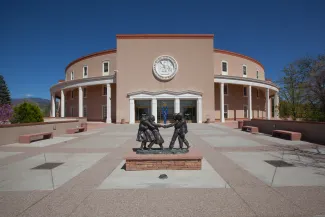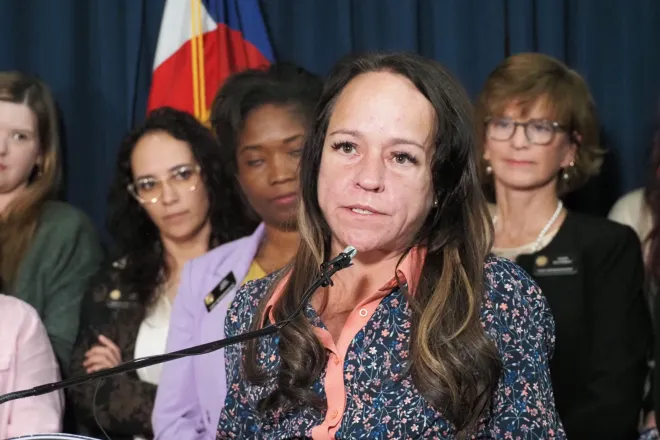
New Mexico micro school districts ask for more state funding, local control
Leaders from New Mexico’s “micro school districts” emphasized to lawmakers Tuesday the need for local control, more state funding and opportunities for students and teachers in rural areas.
According to an LFC brief, micro school districts are ones with 200 or fewer students; New Mexico has 20 such districts spread throughout rural areas of the state serving a total of 2,360 students.
Mosquero Municipal Schools, one of the state’s micro school districts, hosted members of the Legislative Finance Committee Tuesday for the first LFC meeting of the interim this year. Mosquero is located in northeast New Mexico in Harding and San Miguel counties.

© jdwfoto - iStock-1487999298
Mosquero Municipal Schools Governing Board President Victor Vigil told lawmakers local control is key to districts’ success and a one-size-fits-all approach does not make sense when comparing districts that serve only a couple hundred students and more urban districts serving thousands. He emphasized that schools in rural areas serve not only as places of learning, but also as community gathering places and sources of information because libraries, museums, businesses and other facilities are not readily accessible.
“The school is the heartbeat of the town. It’s the heartbeat of a community, especially in a rural area,” Vigil said during the meeting.
Mosquero Superintendent Johnna Bruhn highlighted the need for additional state funds for micro districts. According to the LFC hearing brief, micro districts received $26,100 per student from the State Equalization Guarantee distribution this year, compared to the statewide average of $13,900. However, funding does not stretch as far in rural areas as in urban areas, she said.
“One of the things that would help is if micro districts were funded like we had 100 kids, even if we don’t,” Bruhn said. “That would allow us to make the…adjustments that we need to deliver all the educational requirements that this state has for our kids, to our kids. With less than that, we can’t do it.”
The LFC brief noted that micro districts rely chronically on emergency supplemental funds from the Public Education Department.
Bruhn also pointed out that if the PED’s rule requiring 180 instructional days in a school year were implemented in her district, it would require changing the calendar to a five-day school week with a later start time to allow students and staff to travel to school. She said that would increase travel time to about 15 hours per week rather than the current 12 hours.
“Instructional time would actually decrease to 27.5 hours per week. The four-day week is essential here,” she said.
Bruhn added that more incentives to entice highly qualified teachers to work in micro districts are needed, including housing because many staff members, including herself, live in surrounding towns.
Rep. Derrick Lente (D-Sandia Pueblo), a member of the LFC, said many of the concerns Bruhn presented are similar to those of Native communities in New Mexico. Local control of how and what students are taught is influenced by culture and tradition — lawmakers noted during the discussion that Mosquero and the surrounding area is largely influenced by agricultural work.
“If what is important to this community is farming and ranching, the same thing is being said by those pueblos, tribes and nations when we talk about making sure that what we’re teaching our children in terms of a culture, in terms of a practice are rooted in a native language,” Lente said. “I think that we need to share these with the PED because these shouldn’t be a liability, but these should be an eye opener in terms of how we need to look at things differently for rural education.”
















